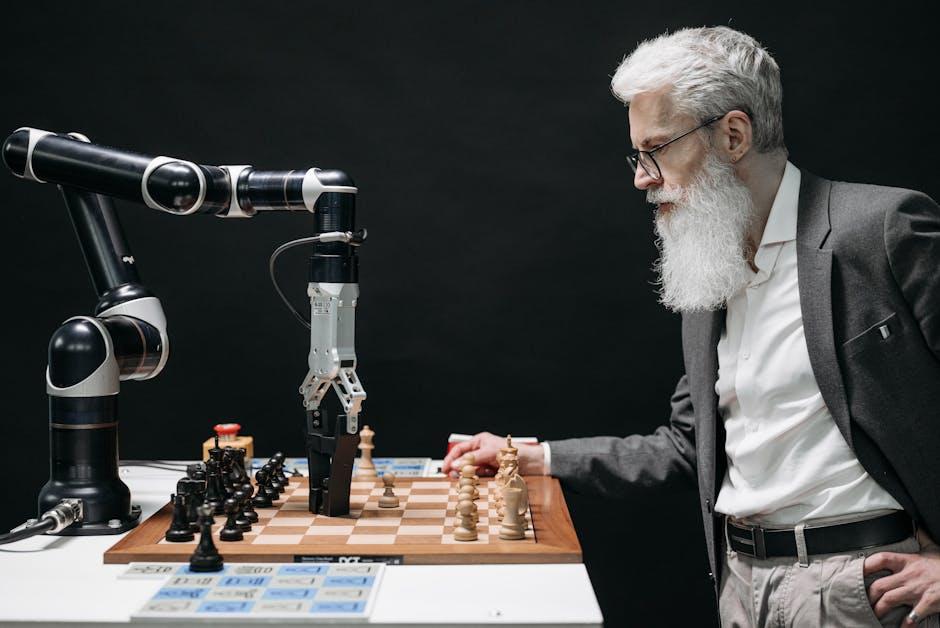In the dim glow of the editing suite, where creativity meets precision, a quiet revolution is underway. The art of film editing, long dominated by the intuition and skill of human hands, is being transformed by the advent of artificial intelligence and machine learning. These cutting-edge technologies are not just tools but collaborators, offering new possibilities and challenges in the storytelling process. As algorithms learn to understand pacing, emotion, and narrative flow, editors are finding themselves in a dynamic partnership with machines, reshaping the way stories are crafted and experienced on screen. This article delves into the profound impact AI and machine learning are having on film editing, exploring how these innovations are redefining the boundaries of cinematic creativity.
Revolutionizing the Cutting Room: AIs Role in Modern Film Editing
In the ever-evolving landscape of cinema, artificial intelligence has emerged as a groundbreaking tool in the hands of film editors. AI algorithms are now capable of analyzing vast amounts of footage, identifying key scenes, and even suggesting cuts that align with the director’s vision. This technological leap allows editors to focus more on the creative aspects of storytelling, rather than getting bogged down by the tedious process of sifting through hours of raw material.
With machine learning, the possibilities expand even further. Editors can now utilize tools that learn from editing patterns and preferences, creating a personalized editing experience. Some notable benefits include:
- Enhanced Efficiency: AI can automate repetitive tasks, reducing the time spent on manual editing.
- Improved Precision: Machine learning algorithms can detect subtle nuances in footage, ensuring seamless transitions.
- Creative Freedom: By handling the technical details, AI allows editors to experiment with innovative storytelling techniques.
As the technology continues to evolve, the role of AI in film editing is poised to grow, offering new dimensions to the art of cinema.

From Pixels to Patterns: Machine Learnings Impact on Editing Techniques
In the realm of film editing, the evolution from manual cuts to digital slicing has now embraced the next frontier: artificial intelligence and machine learning. These technologies have introduced a level of precision and creativity that was previously unimaginable. Editors now harness the power of AI to recognize patterns and suggest edits, creating a seamless storytelling experience. The ability to automatically tag scenes, identify emotions, and even predict audience engagement levels are just a few ways machine learning is revolutionizing the editing suite.
With AI-driven tools, editors can:
- Automate repetitive tasks, freeing up time for more creative decisions.
- Enhance color grading by analyzing thousands of frames for consistent tones.
- Generate rough cuts based on script and scene analysis.
- Synchronize audio and video with pinpoint accuracy.
The fusion of machine learning and editing is not just about efficiency; it’s about opening doors to new creative possibilities. As these technologies continue to evolve, the art of film editing is poised for a transformation that will redefine visual storytelling.

Crafting Cinematic Flow: AI-Driven Precision and Creativity
In the realm of film editing, the integration of AI is reshaping the traditional narrative by infusing both precision and creativity into the process. AI algorithms, powered by machine learning, are now adept at analyzing vast amounts of footage to identify patterns, moods, and themes. This ability allows editors to focus on the creative aspects of storytelling while AI handles the meticulous tasks. Imagine a system that can automatically suggest cuts or transitions based on the emotional tone of a scene. This is no longer a distant dream but a present reality, as AI tools become increasingly sophisticated.
- Automated Scene Analysis: AI can quickly sift through hours of footage to tag scenes, making it easier for editors to locate key moments.
- Emotion Recognition: Machine learning models can assess facial expressions and voice tones, offering insights into the emotional impact of each scene.
- Dynamic Storyboarding: AI-driven software can generate preliminary storyboards, providing a visual guide that enhances creative decision-making.
By leveraging these technologies, filmmakers can achieve a balance between technical accuracy and artistic expression, crafting a cinematic flow that captivates audiences. The fusion of human intuition and AI-driven precision heralds a new era in film editing, where creativity knows no bounds.

Navigating the New Landscape: Best Practices for Integrating AI in Film Editing
Incorporating AI into film editing demands a strategic approach to harness its full potential while maintaining creative integrity. Editors should start by familiarizing themselves with the latest AI-driven tools and software, understanding how these technologies can automate mundane tasks and offer innovative solutions. Machine learning algorithms can assist in scene detection, color correction, and even suggest edits based on previous projects.
- Embrace Collaboration: Use AI as a collaborative tool rather than a replacement, ensuring that human creativity remains at the forefront.
- Stay Updated: Regularly update software and tools to access the latest features and improvements in AI technology.
- Prioritize Security: Protect sensitive footage and data by implementing robust cybersecurity measures when using cloud-based AI solutions.
By adopting these practices, filmmakers can enhance their editing process, striking a balance between technology and artistry, ultimately delivering compelling narratives that resonate with audiences.

